Hủ Tiếu Gõ (Knocking Noodle Soup)
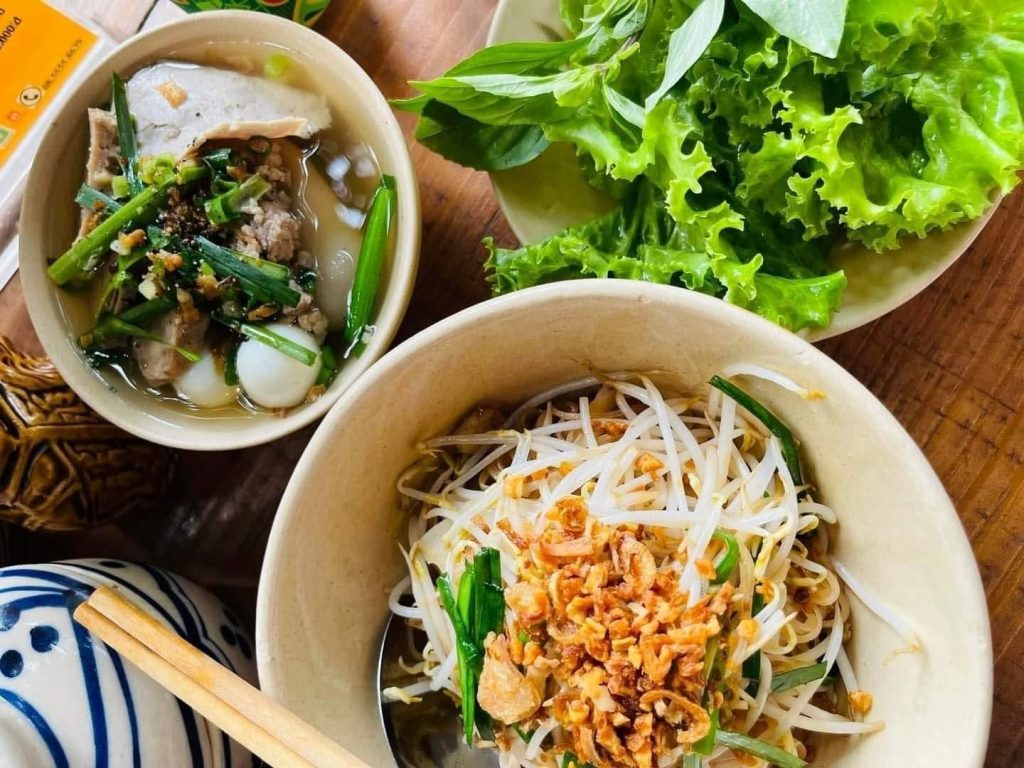
Ingredients
-
30g hủ tiếu noodles (rice noodles)
-
500g pork bones
-
300g lean pork
-
20g dried shrimp
-
3 white radishes
-
30g bean sprouts
-
2 stalks scallions
-
1 tbsp crispy shallots
-
1 tbsp crispy pork fat (tóp mỡ)
-
1/2 tbsp cooking oil
-
1/2 tbsp seasoning salt
-
2 tbsp rock sugar
-
Common spices: salt, MSG, ground pepper
How to choose fresh pork and pork bones
-
Good pork should have a light pink or pale red color, with fat that’s white or slightly ivory.
-
Choose cuts that are firm and elastic to the touch. Avoid pork that feels slimy or overly soft.
-
Fresh pork bones are usually bright in color, without any grayish hue or strange smell, and about 2–3 fingers wide.
How to choose fresh pork skin
-
Fresh pork skin has a natural white-pink color and a thick, firm texture when touched.
-
It’s best to select pork skin from under the loin or shoulder cuts, as it’s typically more tender.
-
Avoid skin that looks pale, discolored, or has a foul, fishy odor.
How to choose good-quality beef balls (bò viên)
-
Quality beef balls should have a mild meaty aroma and natural color.
-
Avoid those with a sour smell or slimy surface.
-
It’s best to buy frozen beef balls from trusted supermarkets or stores like Bách Hóa Xanh. You can also order online via bachhoaxanh.com.
-
Alternatively, you can make your own at home using a safe and simple recipe.
How to choose good dried shrimp
-
High-quality dried shrimp should have a natural pink-red hue (like terracotta), firm texture, and a clean scent.
-
Avoid shrimp that are too brightly colored or dark red, as they may be dyed or not from quality sources—these are potentially harmful to your health.
-
You can also make dried shrimp at home easily with a traditional method or microwave technique.
Nutritional Information
For: Meat-eater
Calories per serving: ~420 kcal
Key Nutrients:
1. Protein
Sources: lean pork, dried shrimp, pork bones
Benefits: builds and repairs tissues
2. Collagen & Calcium
Sources: pork bones
Benefits: supports joint and bone health
3. Fiber & Antioxidants
Sources: white radish, scallions, bean sprouts
Benefits: aids digestion and supports immunity
4. Healthy Fats
Sources: crispy pork fat (tóp mỡ), cooking oil
Benefits: energy support and fat-soluble vitamin absorption
1. Prepare the Pork, Bones, and Pork Skin
Rinse the pork, pork bones, and pork skin under cold water. Blanch them in boiling water mixed with 1 tsp of salt.
Remove and rinse again with cold water, then drain.
For the pork skin, scrape it clean and rub with salt or vinegar to eliminate odor. Rinse thoroughly, then boil until cooked. Remove and set aside to cool.
Tip for removing pork smell:
-
Add a crushed shallot to the boiling water when cooking the pork.
-
Alternatively, add a splash of rice wine to the pot before removing the meat.
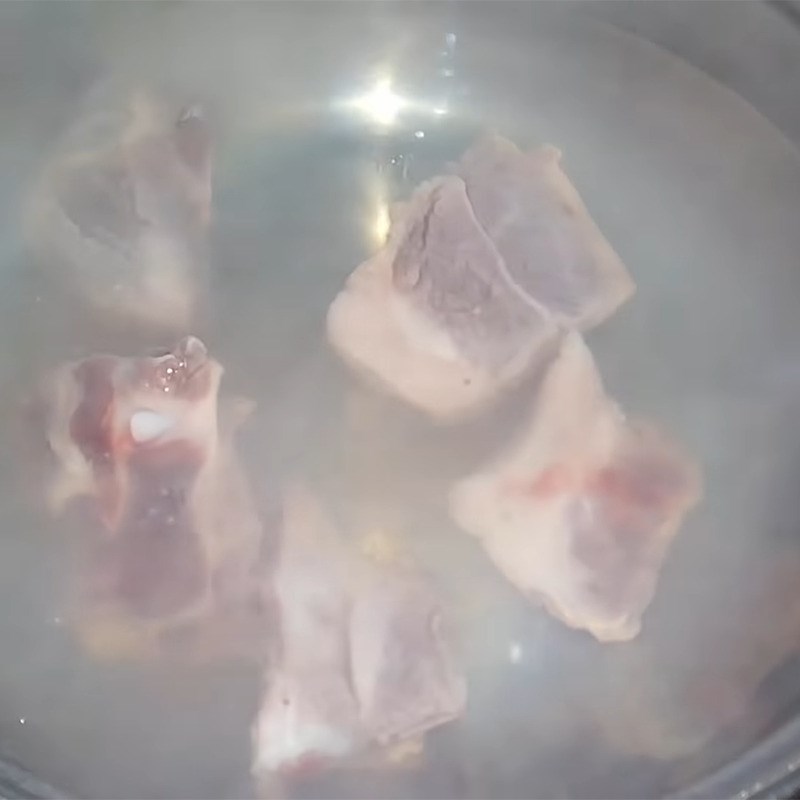
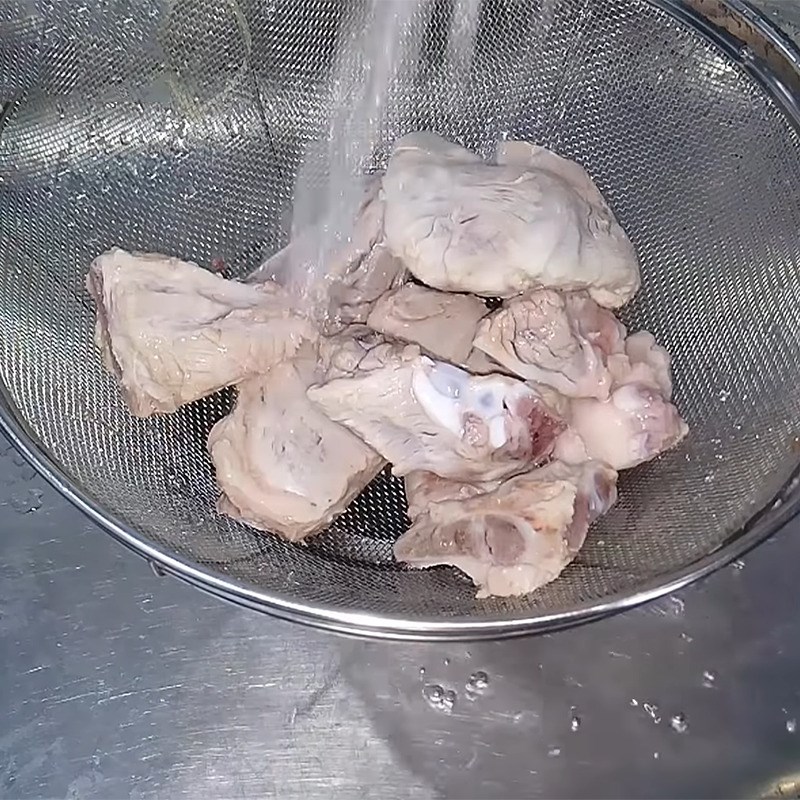
2. Prepare the Other Ingredients
Peel and wash the white radish, rinse the bean sprouts and let them drain. Rinse the scallions and cut into small pieces.
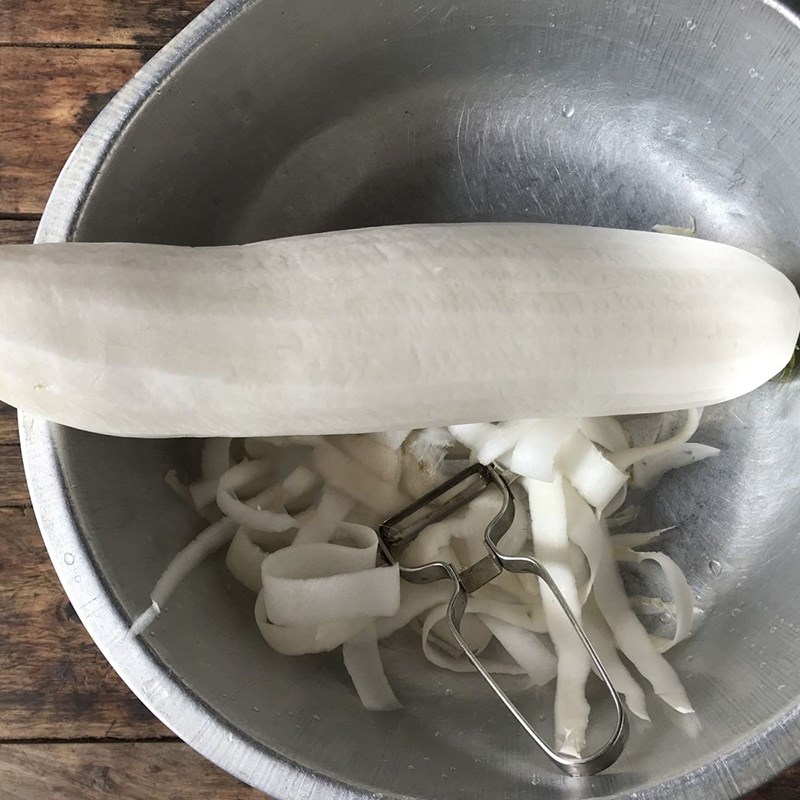
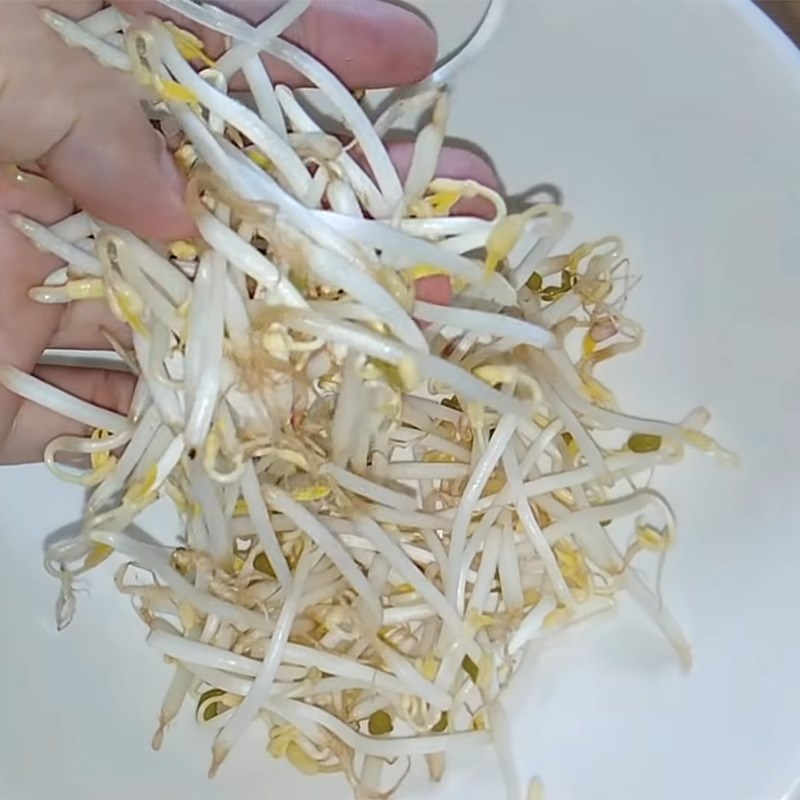
3. Cook the Broth
In a pot, combine the pork bones, pork, 2 liters of water, white radish (3 pieces), and 20g dried shrimp.
Add:
-
½ tsp salt
-
½ tbsp seasoning powder
-
2 tbsp rock sugar
-
½ tsp MSG (optional)
Bring to a boil, skim off any scum to clarify the broth.
Once boiling, reduce the heat to a gentle simmer and cook for about 30 minutes until the pork is tender.
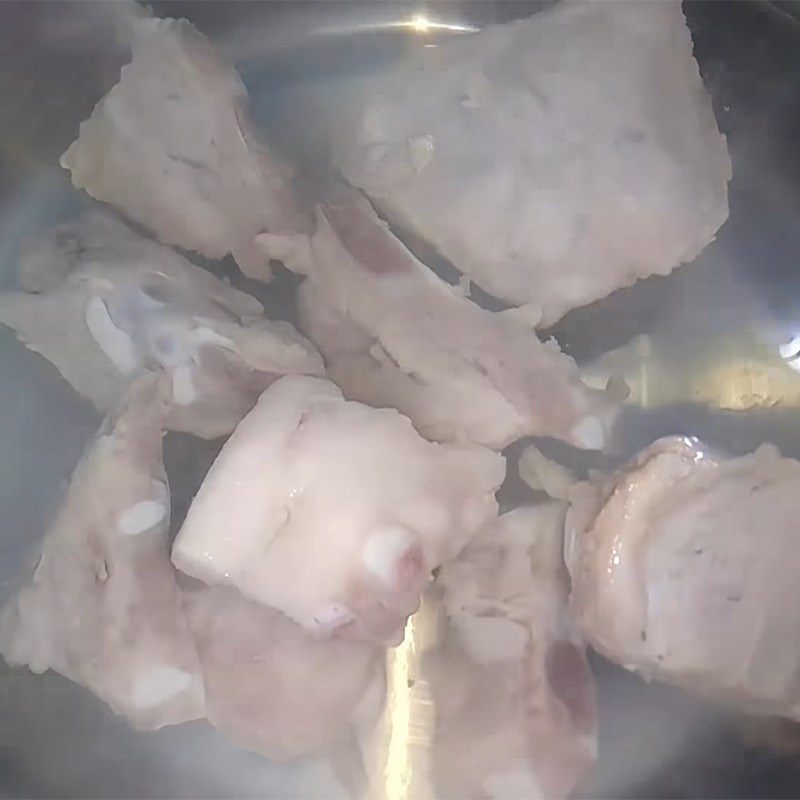

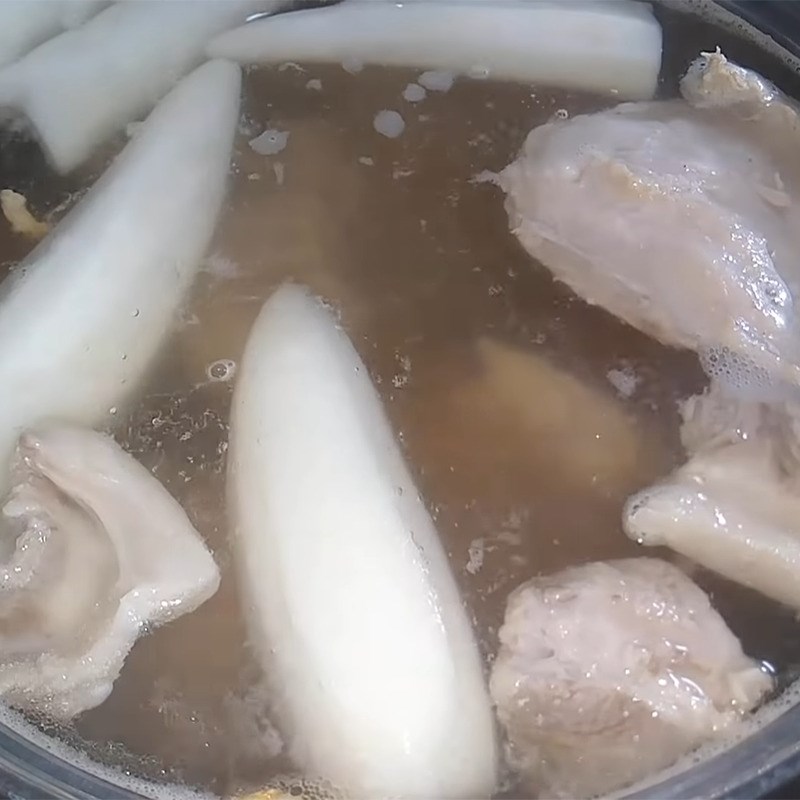
4. Slice the Pork
Once the pork is fully cooked, remove it from the broth, soak it briefly in cold water to firm it up, then slice it thinly.
Do the same with the pork skin—cut it into bite-sized pieces.
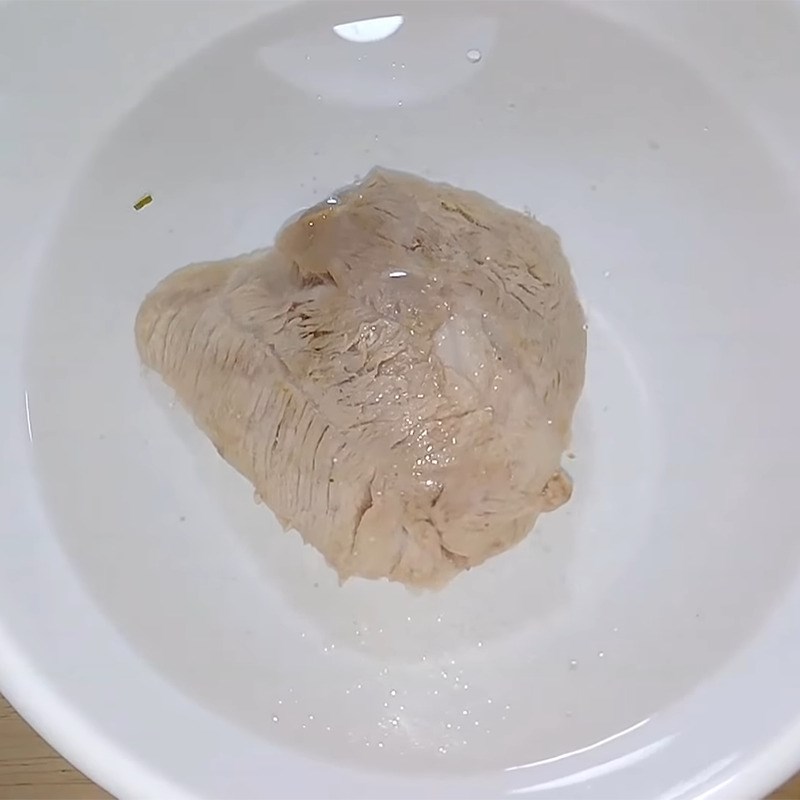
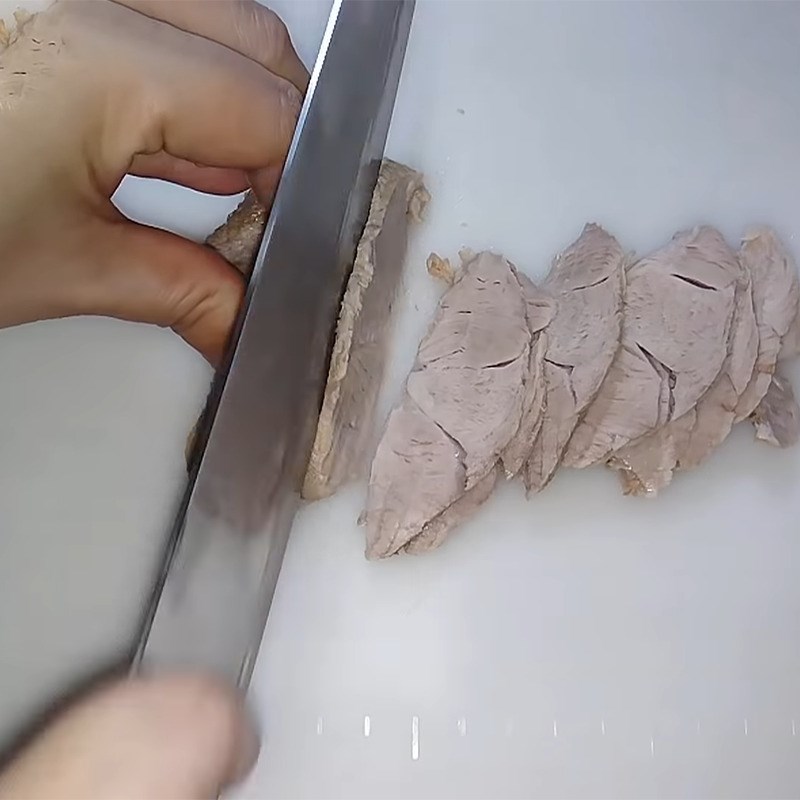

5. Blanch the Noodles and Bean Sprouts
Bring a pot of water to boil. Blanch the hủ tiếu noodles and bean sprouts for 1–2 minutes, then drain.
Mix the noodles with ½ tbsp of oil to prevent sticking.
Tips for chewy, non-soggy noodles:
-
Soak the noodles briefly in cold water before blanching.
-
Blanch in boiling water quickly, then rinse under cold water to lock in texture.
Assemble the bowl: place bean sprouts and noodles in first, then top with sliced pork, pork skin, beef balls, and pork bones.
Ladle the hot broth over and garnish with chopped scallions, crispy shallots, pork cracklings, chili, and pepper.
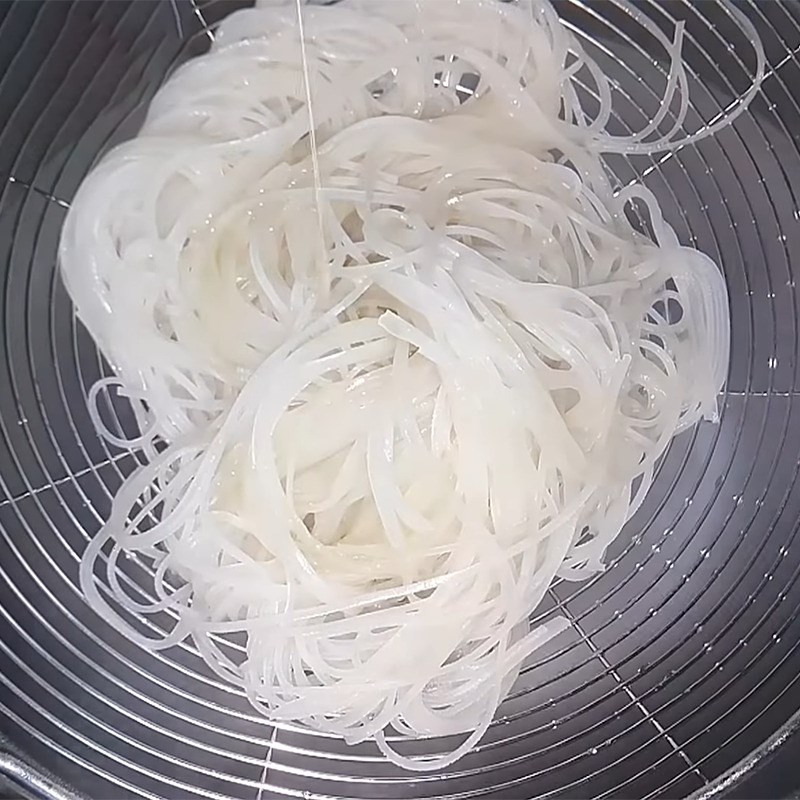
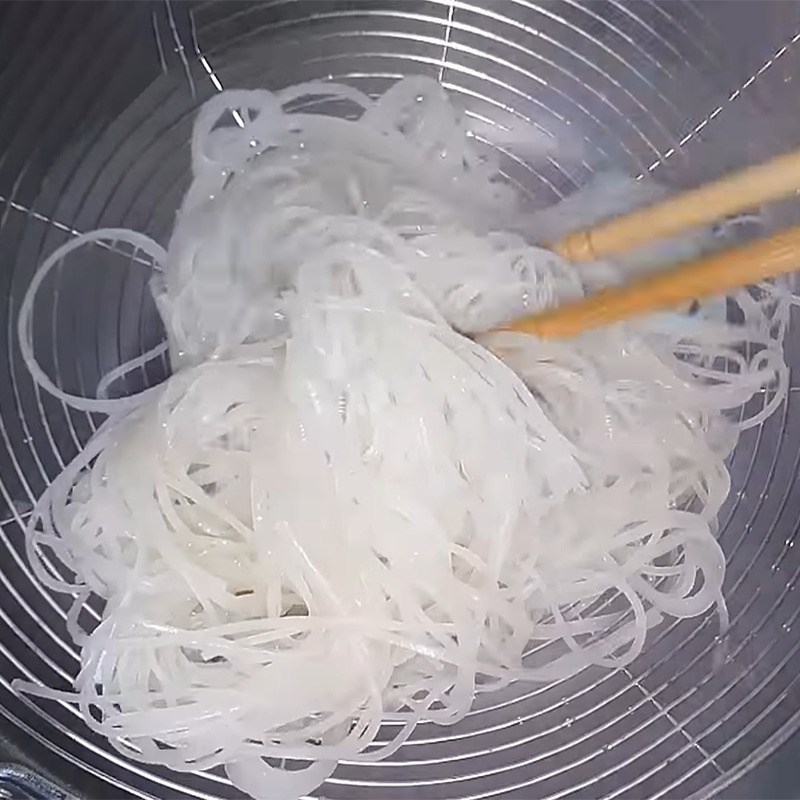
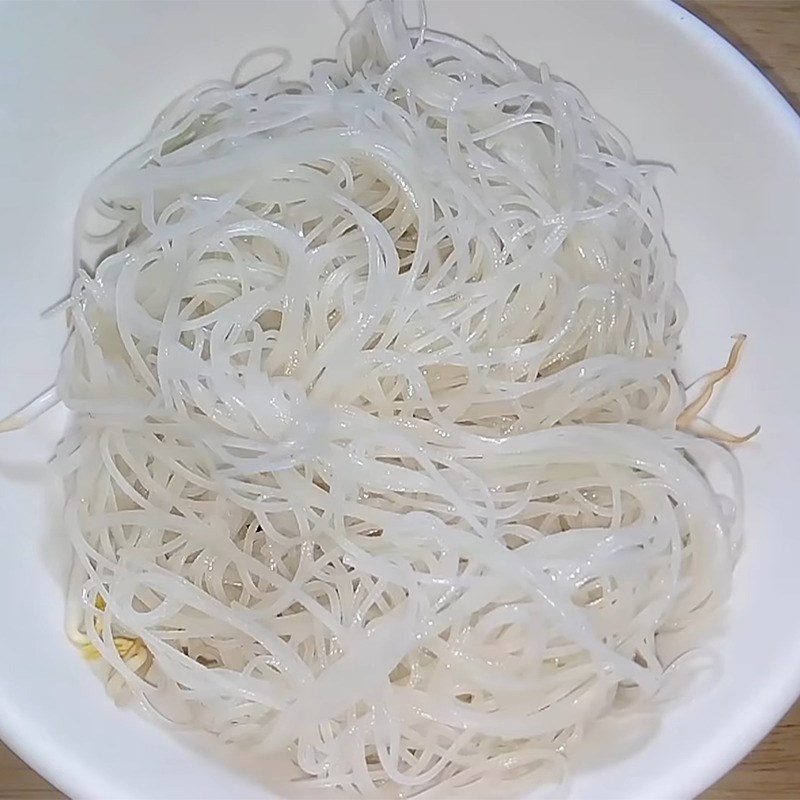
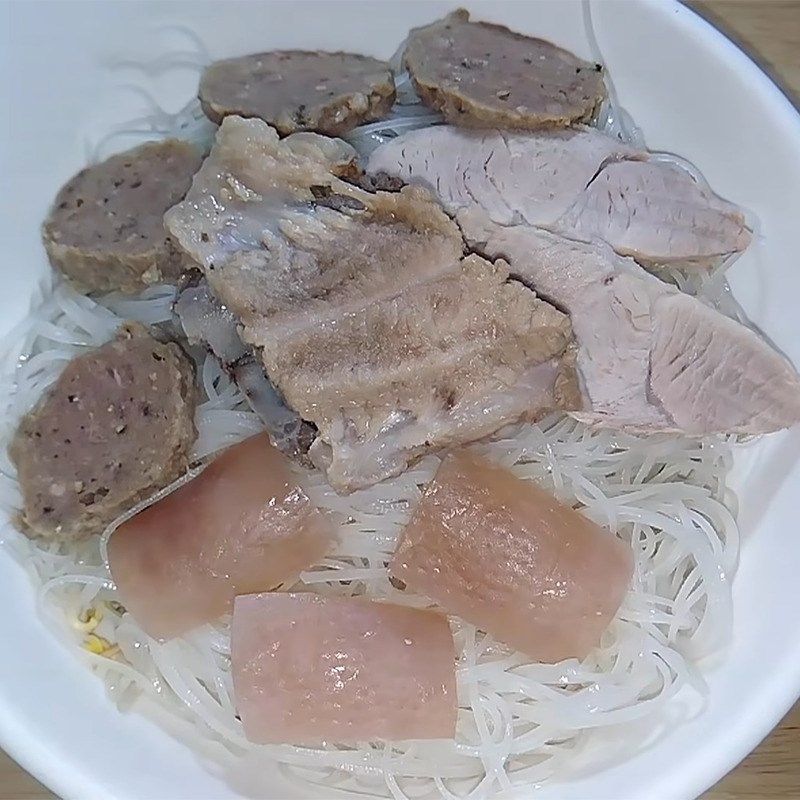
6. Final Dish
A bowl of hủ tiếu gõ offers an enticing aroma, with sweet umami broth from simmered bones and radish.
The noodles are chewy, the pork is tender, the pork skin adds a gelatinous richness—together, they create a perfect harmony of street-style Vietnamese comfort.
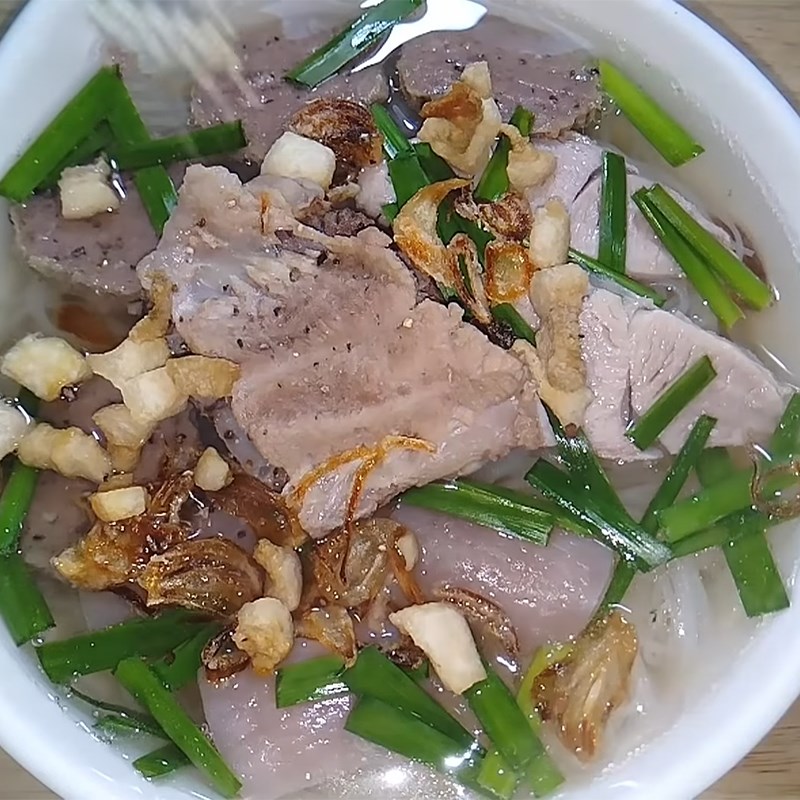
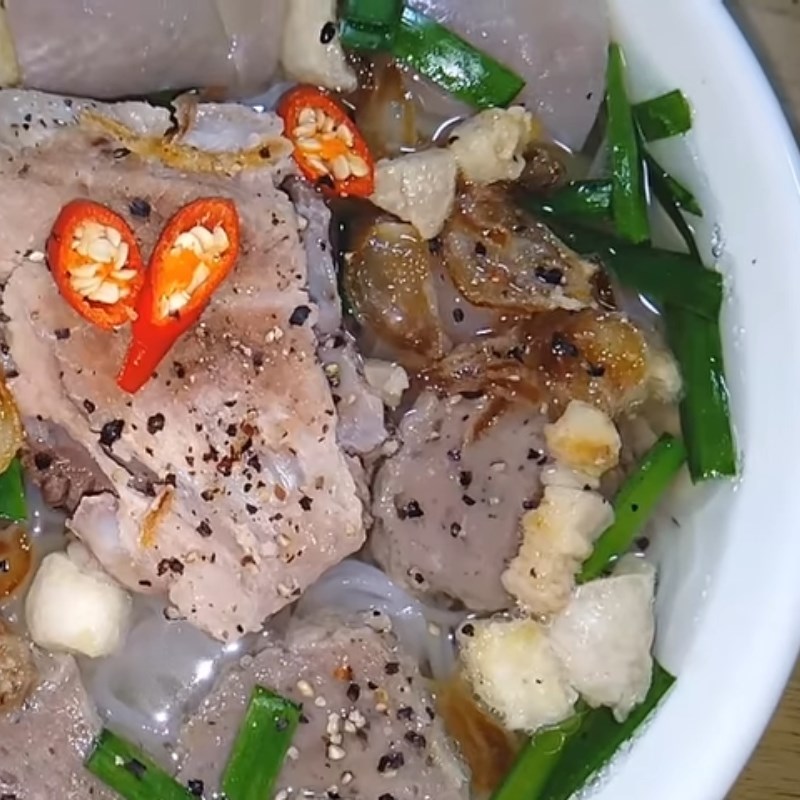
Hủ Tiếu Gõ – The Soulful Sound of Saigon Nights
Among the many street food treasures of Vietnam, hủ tiếu gõ holds a special place in the hearts of Saigonese. It’s not just a dish — it’s a sound, a rhythm, a memory that echoes through narrow alleyways as the city settles into the quiet of the night.
The name “hủ tiếu gõ” literally translates to “knock noodle soup,” referring to the iconic knocking sound street vendors make as they push their wooden carts through neighborhoods. They knock two wooden sticks or bang a metal spoon against the cart’s frame — a signal that warm, comforting food is near. This knocking becomes a familiar lullaby for those lying in bed, a gentle invitation to step out for a bowl of noodles under the stars. For many people who grew up in southern Vietnam, that sound evokes powerful memories of childhood and late-night meals with family or friends on plastic stools and low metal tables.
Unlike restaurant dishes, hủ tiếu gõ doesn’t come with frills or fanfare. It’s a humble, working-class meal — often served late into the night, cooked over a simple coal stove in the back of a vendor’s cart. Yet its flavors are rich with love and labor. The broth is light but deeply aromatic, typically made by simmering pork bones, dried shrimp, and daikon radish for hours. The noodles — thin, chewy rice noodles — are blanched to order, then topped with a modest yet comforting mix: thin slices of pork, maybe a few pieces of pork skin or beef balls, some blanched bean sprouts, fragrant scallions, crispy shallots, and a generous dash of black pepper. Add a spoonful of chili or a splash of vinegar, and the bowl is complete — simple, hearty, and perfect.
What makes hủ tiếu gõ special isn’t just its taste, but the culture that surrounds it. It belongs to the night. It belongs to the people who work late, the students studying under flickering lights, the tired souls who seek comfort in a warm bowl. It’s the meal of those who don’t need a menu to order — only the sound of knocking to know that something good is coming.
Today, as Saigon grows and modernizes, hủ tiếu gõ still holds on — a reminder of a slower rhythm, of neighborly warmth, of food that is both sustenance and story. In each bowl lies not just noodles and broth, but the echo of footsteps, the clatter of chopsticks, and the quiet, intimate beat of life on the streets.


(“knock noodle soup”)